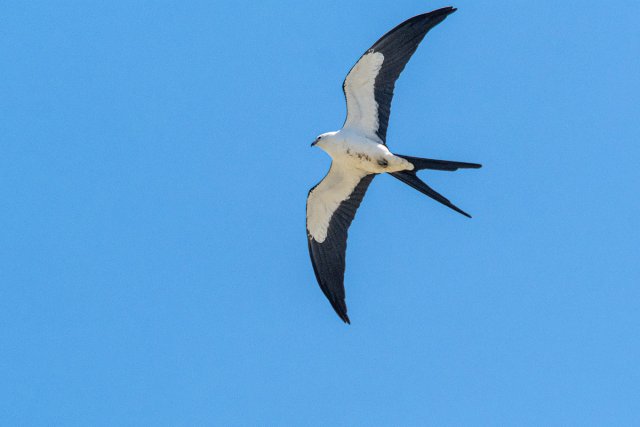Birding!
- Thread starter jjohnwm
- Start date
You are using an out of date browser. It may not display this or other websites correctly.
You should upgrade or use an alternative browser.
You should upgrade or use an alternative browser.
I like Mourning Doves, and although not common here, they are becoming more and more visible in our yard with each passing year. They're obviously breeding nearby, but I have yet to find a nest on my own land. You're lucky, it's nice to be able to watch the nesting process right outside your door...
...that is...if you're telling the truth...
...that is...if you're telling the truth...
View attachment 1541018
My kid sent this a couple of days ago, they built the nest in a wreath, hanging on her
front door. lol
So now she gets to leave a Christmas wreath hanging on her door well into late spring.

When I was working on remote jobsites, preventing local migratory birds from nesting on structures or even on parked heavy equipment was a serious job. Once there are eggs in the nest, it's illegal to interfere with the nest until the young have hatched and fledged. Plenty of jobsites actually have professional falconers on staff to frighten away birds that try to nest in spots like that.
On my last northern jobsite, there were several occasions that work on a particular area ground to a halt for weeks until the birds moved out. Picture a "rock truck"...a pickup truck scaled up to the point where each tire stands 6 or more feet tall and the operators cockpit is ten feet in the air. That thing costs a small fortune to transport up into the ass end of nowhere, and when it's there it is in use almost constantly, because everything is rushrushrush. The operator is supposed to do a complete vehicle safety inspection at the start of his/her shift each day; if the truck breaks down and requires service, that's megadollars being wasted for every hour of downtime. Now, picture a truck that is "down" for a couple days waiting for a part or repair. A pair of Robins constructed a nest on the truck as it sat idle; they went from zero to completed nest with an egg in it in just over 48 hours. That truck then sat there untouched for an additional month until the young hatched and fledged. Only then did the Environmental Team permit even the mechanic to approach it again to perform the repair.
Mind you, these are the same earth-mother-type geniuses who were called when a number of fish, including several sturgeon, were trapped within a chamber at the bottom of the interior of the dam. Our heroes netted the fish after much splashing and swearing, then carried them up 19 flights of stairs to the top of the dam, across almost the entire length of the dam (roughly a kilometer), and then picked their precarious way down the rocky breakwall to the river where the fish were unceremoniously dumped into the water. The biggest sturgeon was maybe four feet long, and practically bone dry by the end of its harrowing journey.
It felt good to see trained professionals working hard to save those fish...
So now she gets to leave a Christmas wreath hanging on her door well into late spring.
Yes, well the not so funny part of that story - is that it was a pair of House Sparrows that built that nest, and laid those eggs. When she asked me what she should do, I told her that she wouldn't like my answer.
Yes, well the not so funny part of that story - is that it was a pair of House Sparrows that built that nest, and laid those eggs. When she asked me what she should do, I told her that she wouldn't like my answer.
House Sparrows are usually cavity-nesters; is she mistaken? Although the eggs do look about right for that species.
If they are indeed House Sparrows, it's perfectly legal (and, IMHO, ethically acceptable) to destroy that nest. They're an introduced invasive species, not protected at all.
I told her what I thought they looked like (the eggs) and she said that she saw the pair, and ID'd them as House Sparrows? But she isn't exactly a bird person, so who knows? I basically told her the same as you, very unusual for House Sparrows to build a nest out in the open, and so close to human activity.
In the back garden this morning the wife and I were watching a pair of blackbirds rummaging for worms in the wet grass. I was just explaining to her which was the male and which was the female when I caught a sudden movement in some bushes which overhang our back fence from the adjacent garden.
I was pleasantly surprised to see a pair of bullfinches. They're not exactly rare but it was still nice to see them as they don't seem to be half as common as the other garden birds we see regularly.
I wanted to snap a picture of them but I would have needed something a bit better than my phone to get a crystal clear close up shot of the pair, so here's a pic courtesy of Google just to show you. Beautiful birds.
I was pleasantly surprised to see a pair of bullfinches. They're not exactly rare but it was still nice to see them as they don't seem to be half as common as the other garden birds we see regularly.
I wanted to snap a picture of them but I would have needed something a bit better than my phone to get a crystal clear close up shot of the pair, so here's a pic courtesy of Google just to show you. Beautiful birds.







